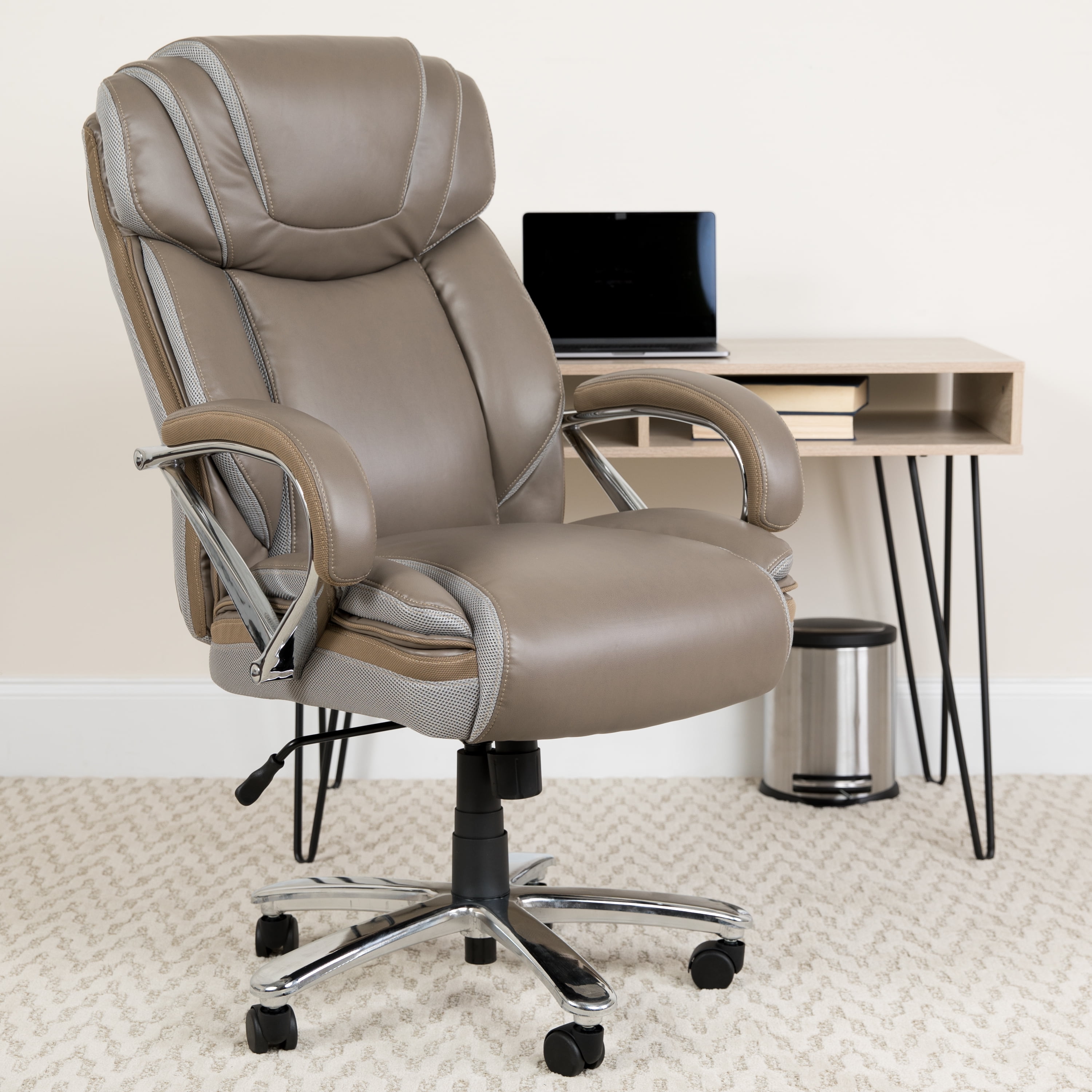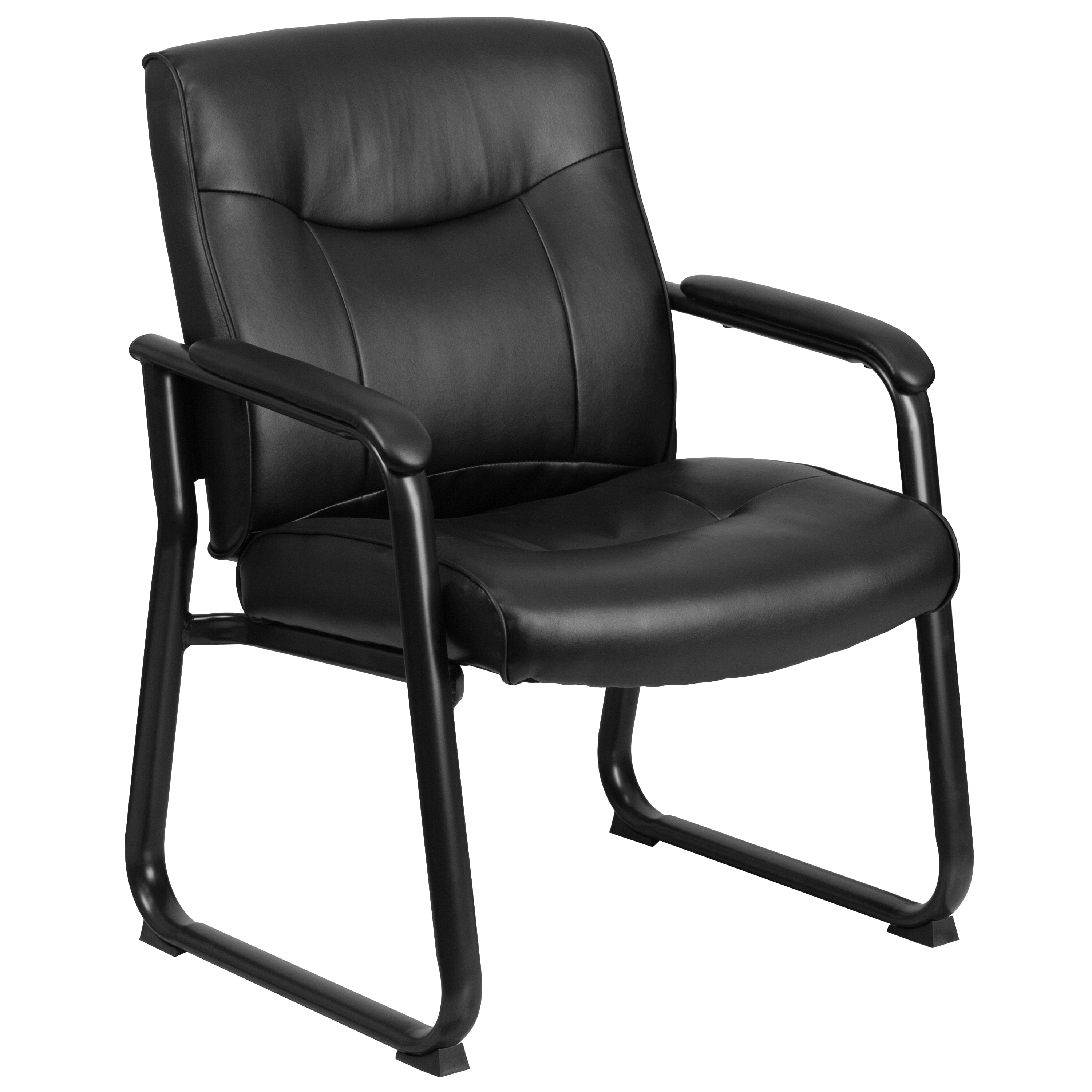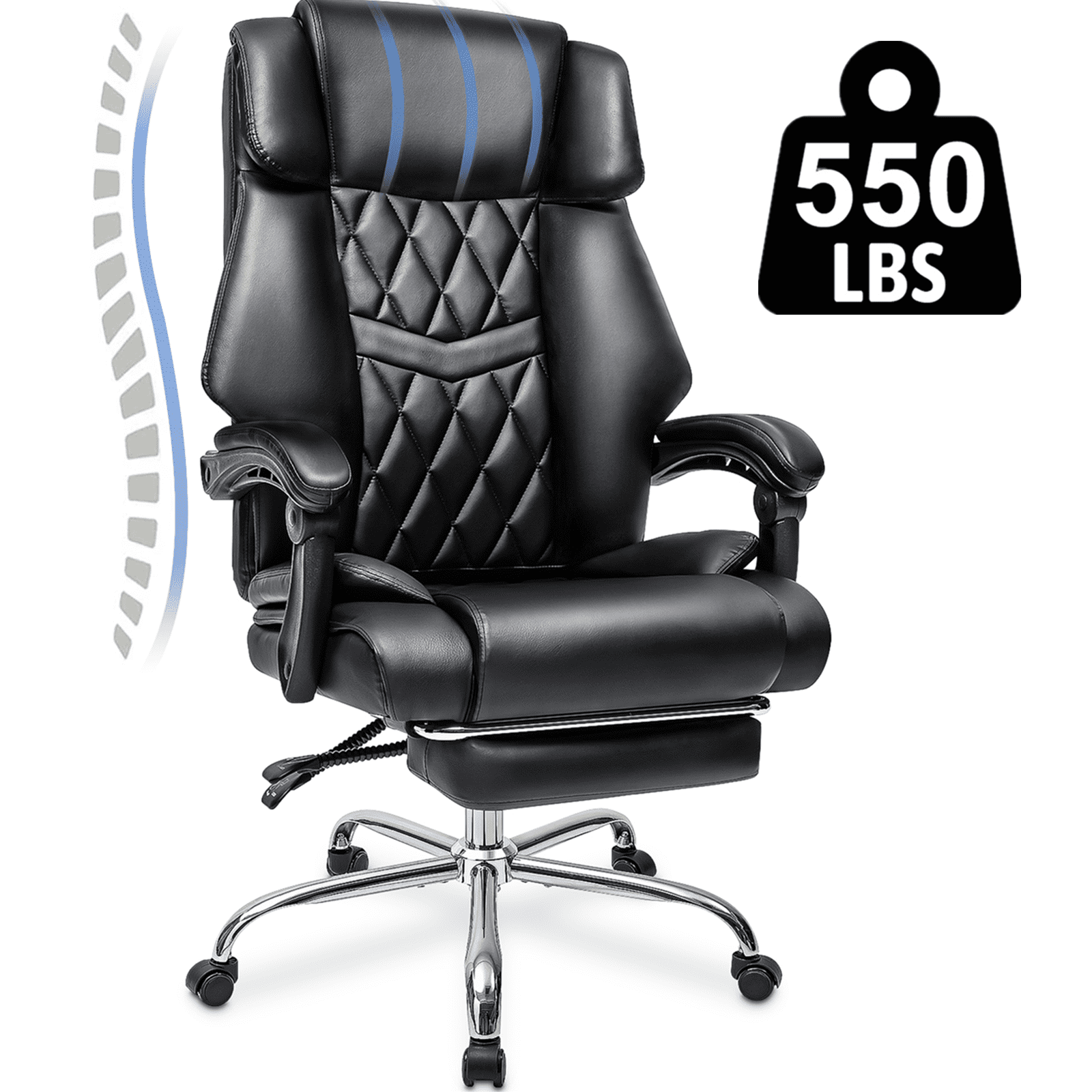Finding the Right Fit

Choosing the right desk chair is crucial for comfort and health, especially for larger individuals. An improperly fitted chair can lead to discomfort, pain, and long-term health issues. This section will guide you through the process of selecting a chair that provides adequate support and promotes good posture.
Chair Dimensions and Weight Capacity
Selecting a chair with appropriate dimensions and weight capacity is paramount for larger individuals. A chair that’s too small will restrict movement and cause discomfort, while one with insufficient weight capacity may be unsafe. The following table provides a comparison of dimensions for chairs marketed towards larger individuals. Note that these are sample dimensions and can vary significantly between manufacturers and models. Always check the manufacturer’s specifications before purchasing.
| Chair Model (Example) | Width (inches) | Depth (inches) | Height (inches) | Seat Height (inches) | Back Height (inches) |
|---|---|---|---|---|---|
| Model A | 28 | 24 | 48 | 20 | 30 |
| Model B | 30 | 26 | 50 | 22 | 32 |
| Model C | 32 | 28 | 52 | 21 | 34 |
| Model D | 34 | 30 | 54 | 23 | 36 |
Key Features for Large Person Desk Chairs
Several key features should be considered when choosing a desk chair designed for larger individuals. These features directly impact comfort, support, and overall health.
Desk chair for large person – The following points highlight the importance of these features:
- Weight Capacity: Always select a chair with a weight capacity significantly exceeding your weight to ensure stability and longevity. A safety margin is crucial.
- Seat Width: Sufficient seat width is essential to prevent pressure points and ensure proper weight distribution. Look for chairs with wide seats that accommodate your hips and thighs comfortably.
- Back Support: Robust back support is vital for maintaining proper posture and reducing strain on the spine. Consider chairs with adjustable lumbar support and high backs for optimal comfort.
- Seat Depth: Appropriate seat depth ensures your thighs are supported without feeling cramped or restricted. The seat should allow for a slight gap between the back of your knees and the seat edge.
- Armrests: Adjustable armrests can provide additional support and comfort, reducing strain on your shoulders and arms. Consider armrests that allow for customization based on your individual needs.
Posture and Back Support for Large Individuals
Maintaining proper posture is crucial for everyone, but it’s especially important for larger individuals. Excess weight puts added stress on the spine and joints, increasing the risk of back pain, neck pain, and other musculoskeletal problems. Inadequate seating can exacerbate these issues. Prolonged periods of sitting in an improperly fitted chair can lead to chronic pain, reduced mobility, and even nerve damage. A chair that provides adequate lumbar support and encourages proper spinal alignment is essential for mitigating these risks. Consider consulting a physician or physical therapist for personalized advice on posture and seating.
Body Measurement Guide for Chair Fit
A visual guide would illustrate the following measurements:
The guide would show a person sitting in a chair, with labeled measurements indicated using arrows and clear descriptions. These measurements would include:
- Seat Height: The distance from the floor to the top of the seat. This determines the correct leg angle and prevents strain on the knees and hips. The ideal height allows your feet to rest comfortably flat on the floor.
- Seat Width: The width of the seat. This measurement should be wide enough to comfortably accommodate your hips and thighs, ensuring proper weight distribution and preventing pressure points. It should be at least two inches wider than your hip width.
- Seat Depth: The distance from the front to the back of the seat. This measurement should be such that there is a small gap (approximately two to three inches) between the back of your knees and the seat edge, preventing pressure and restriction on the legs.
- Back Height: The height of the chair’s backrest. This should be tall enough to support your entire back and maintain proper spinal alignment. Ideally, it should reach to the middle of your shoulder blades.
- Hip Width: The widest part of your hips. This measurement helps determine the necessary seat width for comfortable seating.
- Thigh Length: The length of your thigh from the top of your hip to the back of your knee. This helps determine the correct seat depth and prevents pressure points and restriction on the legs.
Materials and Construction: Desk Chair For Large Person

Choosing the right materials and construction for a desk chair is crucial, especially for larger individuals who require enhanced durability and comfort for extended periods of use. The chair’s ability to withstand weight and provide adequate support directly impacts both comfort and longevity. Understanding the properties of different materials and construction techniques is key to making an informed decision.
The materials used in a desk chair significantly impact its durability and comfort. Different materials offer varying levels of support, breathability, and resistance to wear and tear. The chair’s frame and mechanisms are equally important, as they determine the overall structural integrity and adjustability of the chair.
Material Comparison: Durability and Comfort
The following comparison highlights the strengths and weaknesses of common desk chair materials in relation to durability and comfort for larger individuals. Factors like weight capacity, breathability, and maintenance requirements are considered.
- Mesh: Mesh fabric offers excellent breathability, preventing overheating during prolonged sitting. However, its durability can be lower than other materials, potentially sagging over time under significant weight. Mesh chairs often have a higher weight capacity than similarly priced fabric chairs, but this can vary greatly depending on the quality of the mesh and frame.
- Leather: Leather is known for its luxurious feel and high durability. It’s relatively easy to clean and can withstand significant wear and tear. However, leather can be less breathable than mesh or fabric, potentially leading to discomfort in warmer climates. Genuine leather is generally more durable and comfortable than bonded leather or leatherette alternatives.
- Fabric: Fabric upholstery offers a good balance between comfort, breathability, and durability. The durability varies greatly depending on the type of fabric used; heavier-duty fabrics like nylon blends are more suitable for larger individuals. Fabric chairs often offer a wider range of aesthetic options compared to mesh or leather.
Optimal Materials for Larger Individuals
For heavier individuals, selecting materials that offer both robust support and lasting comfort is paramount. Prioritizing durability ensures the chair remains functional and supportive over time, while comfort reduces the risk of discomfort or injury.
High-quality leather or heavy-duty fabric blends are generally preferred. Look for chairs with reinforced stitching and sturdy construction to ensure longevity. Mesh can be a viable option if it’s part of a well-designed chair with a strong frame and supportive base.
Reinforced Frames and Mechanisms
The chair’s frame and mechanisms are critical for its overall stability and adjustability. Heavier individuals need chairs with reinforced frames and mechanisms capable of withstanding higher weight loads and frequent adjustments. Compromising on these aspects can lead to premature wear and tear or even structural failure.
Look for chairs with robust metal frames (steel or aluminum), reinforced joints, and smooth-operating mechanisms. The gas lift cylinder should be rated for a weight capacity significantly exceeding the user’s weight to ensure safe and reliable height adjustment. A five-star base with sturdy casters is also essential for stability and maneuverability.
Assessing Chair Quality and Sturdiness
Before purchasing a desk chair, carefully inspect its construction and materials to assess its quality and sturdiness. This process involves checking several key aspects of the chair to ensure it meets your needs.
- Frame Material and Construction: Examine the frame for any signs of weakness or bending. Look for heavy-gauge steel or aluminum construction and securely welded joints.
- Weight Capacity: Always check the manufacturer’s stated weight capacity, ensuring it significantly exceeds your weight. A chair’s weight capacity should be clearly specified.
- Mechanism Quality: Test the chair’s adjustment mechanisms (height, tilt, recline) to ensure they operate smoothly and feel sturdy. Avoid chairs with loose or wobbly mechanisms.
- Upholstery Quality: Inspect the upholstery for quality stitching, durable materials, and appropriate padding. Look for reinforced seams and thick padding for enhanced comfort and longevity.
- Base and Casters: Ensure the five-star base is made of sturdy material and the casters roll smoothly and quietly. Check for any signs of instability or wobble.
Ergonomics and Adjustability

Finding the right desk chair for a large person goes beyond simply finding one that’s big enough. Ergonomics and adjustability are crucial for maximizing comfort and minimizing the risk of long-term health issues. A chair that doesn’t properly support your body can lead to discomfort, poor posture, and even chronic pain. Choosing a chair with a wide range of adjustable features is essential for creating a personalized, supportive seating experience.
Ergonomic design principles are particularly important for larger individuals, who may experience increased strain on their bodies due to their size and weight. A chair designed with ergonomic principles in mind will provide the necessary support to maintain proper posture and reduce pressure points, thus mitigating discomfort and potential injury. This section will explore the key adjustable features of an ergonomic chair and explain their benefits for larger individuals.
Adjustable Features and Their Benefits
Proper support and adjustability are key to a comfortable and healthy seating experience. The following table details some crucial adjustable features and their positive impacts for larger individuals.
| Feature | Description | Benefit for Larger Individuals | Example |
|---|---|---|---|
| Seat Height | Allows adjustment of the chair’s seat height to match the user’s leg length and ensure proper foot placement on the floor. | Prevents pressure on the thighs and ensures proper posture by allowing for a 90-degree bend at the knees and hips. Important for larger individuals who may have longer legs. | A chair with a pneumatic lift mechanism allowing for a wide range of height adjustments. |
| Armrests | Adjustable armrests allow for customization of height, width, and angle, providing support for the forearms and elbows. | Reduces strain on the shoulders, neck, and back by supporting the arms and promoting a relaxed posture. Crucial for larger individuals who may experience more shoulder and arm fatigue. | Armrests that can be adjusted up and down, inward and outward, and may even pivot. |
| Lumbar Support | Provides support to the lower back, promoting proper spinal alignment and reducing strain. | Essential for larger individuals who may experience increased pressure on their lower backs. Helps maintain the natural curvature of the spine and reduces the risk of back pain. | A chair with an adjustable lumbar support mechanism that can be moved up and down and adjusted for varying degrees of firmness. Some chairs offer inflatable lumbar support for customized firmness. |
| Seat Depth | Adjusts the distance from the front edge of the seat to the back. | Ensures proper thigh support and prevents pressure on the backs of the thighs. A crucial adjustment for larger individuals with longer legs or wider hips. | A chair with an adjustable seat depth mechanism allows for a comfortable fit without restricting blood flow to the legs. |
Importance of Ergonomic Desk Chairs for Large Individuals (Rewritten), Desk chair for large person
Individuals of larger stature often face unique challenges when selecting office seating. Standard chairs frequently lack the necessary support and adjustability to accommodate their size and weight, leading to discomfort, poor posture, and potential long-term health problems. Ergonomic chairs, designed with specific features to promote proper spinal alignment and reduce strain, offer a significant advantage.
The key lies in adjustability. A chair that allows for precise adjustments to seat height, armrest position, lumbar support, and seat depth is essential. Proper seat height ensures the feet are flat on the floor and knees are at a 90-degree angle, preventing pressure on the thighs and promoting good posture. Adjustable armrests support the forearms and elbows, reducing shoulder and neck strain. Lumbar support is crucial for maintaining the natural curvature of the spine and minimizing lower back pain, a common issue for individuals carrying extra weight. Finally, adjustable seat depth accommodates individuals with longer legs or wider hips, ensuring comfort and preventing pressure points. Investing in an ergonomic chair with these features is an investment in long-term health and well-being for larger individuals.
